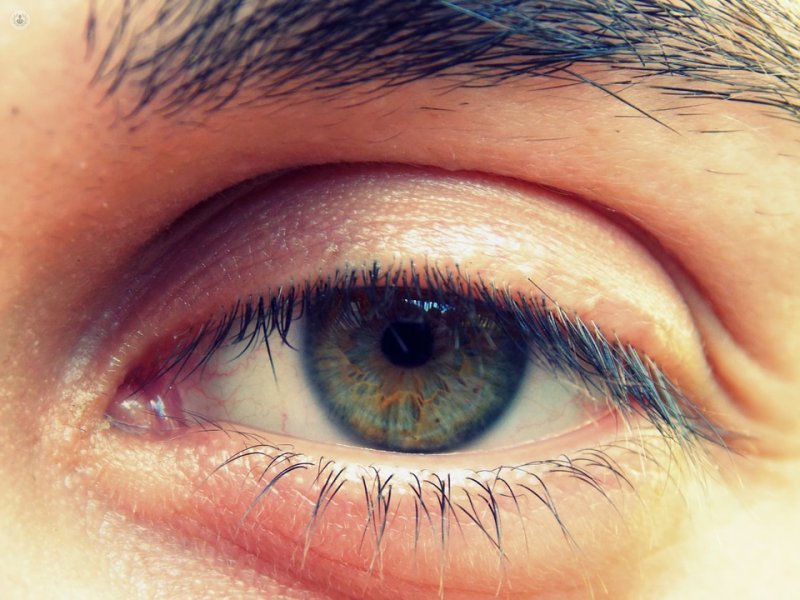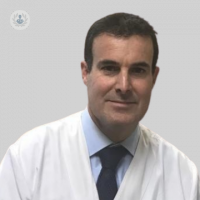tired or presbyopia Vista, pathology manifests after 40 years
Written by:Tired or presbyopia (aged eye) is an age-related eye condition that, as it increases, makes vision up close and difficult and even impossible. This usually occurs between 40 and 45 years, and progresses up to 60 years.

What is the cause of presbyopia?
Up to about 40 years, the crystalline lens, which lies behind the iris that allows focusing on near vision, is flexible, so that by changing its curvature, it allows focusing on distant and near objects.However, from the age of 40 the lens loses elasticity, becoming more rigid. This fact makes it impossible to change shape to focus on objects located about 30-50 cm (near vision). It is common, at first, to push away the near object so as to be able to see it more clearly, but over time this will not be enough and we will have to resort to corrective glasses for near vision. This is so in patients who do not have far refractive defects. Instead:• In myopic patients and in some cases of astigmatism, they will only appreciate presbyopia if they wear their glasses or contact lenses. However, without them, you will see very closely.• In hypermetropes, the opposite will happen, so that presbyopia will appear more precociously, increasing, in some cases, the refractive defect from afar.
Treatments available for tired sight
Close-fitting goggles are the most common and easy way to correct the symptoms of presbyopia and will be used for all activities that require close-up viewing such as reading, sewing, etc.There are also bifocals and progressive lenses. Bifocals have a focus from far away and one close up so that mid-range vision (computer) will not be satisfactory. Progressives, as their name indicates, have multiple focuses, so that, with these, we can see correctly at medium distance. This type of glasses are recommended for people who need to wear optical correction for distant vision and do not want to remove them or change them for others to see up close.Another option would be multifocal or progressive contact lenses , which do not work well in all cases, but may be a useful option in some patients.At present, in addition, there is the possibility of surgical treatment to correct this problem. There are some laser treatment techniques for presbyopia, such as conductive keratoplasty. However, these techniques are not sufficiently developed, so they offer results that diminish with the passage of time or are not predictable as to the quality of the final result.The surgical technique used to correct presbyopia at present is the refractive exchange. This surgery replaces the lens, which has become rigid, by an artificial lens that corrects the symptoms of presbyopia, providing multifocal vision.
What is refractive exchange and how does presbyopia cure?
The surgical technique used for this procedure is the same as in cataract surgery, with the difference that, instead of implanting a monofocal intraocular lens - which allows a good visual acuity from afar without having to wear glasses, although closely if necessary -, a multifocal lens is implanted. In this way we can have a good visual acuity of distance, intermediate vision and near vision without having to use the glasses.Currently there are basically two types of progressive intraocular lenses: the multifocal and the trifocals , which have appeared in recent years.A detailed study of the optic conditions of the patient's eyeball will make the specialist in ophthalmology decide on one or the other. Likewise, in both types of lenses there is the possibility of correcting the astigmatism associated with myopia or hypermetropia.
In what cases can refractive exchange be done to treat presbyopia?
The ideal candidate for this type of surgery is the person who needs to wear glasses, both far and near.Probably the ideal patient will be the hyperopic patient with more than one diopter away, as they will experience a great improvement in vision from far and near. The short-sighted patient will gain much in distant vision. However, close up you will need light to see better conditions. Let's not forget that if the myopic takes off his glasses from afar he will see quite well up close, especially if his myopia is two or four diopters.Currently, cataract surgery is a very safe and effective surgical procedure.. At the same time, in some patients the implantation of these multifocal lenses can generate nocturnal halos, especially in night driving. However, new generation lenses are minimizing this problem, so it is very rare that this will end up posing a major problem for the patient.Finally, it is important to emphasize that it is an effective and safe technique and that, in the right patients, it is very useful, showing all investigations that patient satisfaction is very high.


